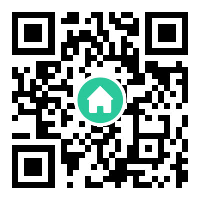The Telegram Bot API has revolutionized the way developers interact with messaging platforms, enabling the creation of versatile bots that automate tasks, deliver content, and enhance user engagement. As an official interface provided by Telegram, this API empowers developers to build feature-rich bots that integrate seamlessly with the app’s ecosystem. From simple auto-reply systems to complex interactive tools, the Telegram Bot API offers a flexible framework for innovation, making it a cornerstone of modern chatbot development.
Introduction to Telegram Bot API
The Telegram Bot API provides a robust set of methods and protocols for building bots within Telegram’s messaging platform. By leveraging HTTPS requests and JSON payloads, developers can program bots to send messages, manage groups, process payments, and even support inline queries. Bots created using this API operate through a unique token provided by Telegram’s BotFather, ensuring secure authentication. With support for over 20 programming languages, the API democratizes bot development, allowing both beginners and experts to create scalable solutions.
Core Features and Capabilities
One of the standout features of the Telegram Bot API is its support for real-time interactions. Bots can use webhooks to receive instant updates from users, enabling responsive workflows such as customer support or live notifications. The API also supports rich media formats, including photos, videos, documents, and stickers, allowing bots to deliver dynamic content. Additionally, inline bots let users access services directly within chat windows—for example, searching GIFs or translating text without leaving the app. Advanced functionalities like custom keyboards and callback buttons further enhance user engagement.
Use Cases Across Industries
The versatility of the Telegram Bot API has led to its adoption across diverse sectors. In e-commerce, bots handle order tracking, payment processing, and personalized recommendations. News organizations deploy bots to push breaking updates and curate content based on user preferences. Educational institutions use bots for quizzes, assignment submissions, and virtual tutoring. Even healthcare providers leverage the API for appointment scheduling and symptom-checking tools. These applications highlight the API’s adaptability to solve real-world problems efficiently.
Security and Best Practices
While the Telegram Bot API simplifies development, security remains a priority. Developers must safeguard bot tokens to prevent unauthorized access. Encrypted communication via HTTPS and input validation are critical to protect user data. Rate limiting and error handling ensure bots remain stable under high traffic. Furthermore, adhering to Telegram’s guidelines—such as avoiding spam and respecting privacy—helps maintain compliance and user trust. Regular updates and monitoring are essential to address vulnerabilities and optimize performance.
Future Prospects and Innovations
As AI and machine learning evolve, the Telegram Bot API is poised to integrate smarter capabilities. Future updates may include native support for voice recognition, predictive analytics, or blockchain-based transactions. The rise of mini-apps within Telegram’s ecosystem could also enable bots to function as lightweight applications. With its open architecture and active developer community, the Telegram Bot API will continue to drive innovation, shaping the next generation of conversational interfaces.
In conclusion, the Telegram Bot API stands as a powerful tool for creating interactive, scalable bots that redefine digital communication. Its comprehensive features, cross-industry applicability, and commitment to security make it indispensable for modern developers. As technology advances, this API will undoubtedly remain at the forefront of chatbot innovation.













